When Prohibition was enacted in America in 1920, it made production and sale of illicit alcohol very attractive. Organized crime was attracted by the high margins in this trade and the noveau riche gangsters it spawned were celebrities in their day. Gangsters and their lives were topics of public interest.
The first pulp publisher to capitalize on this was Harold Hersey. Under his editorship The Underworld which started in 1927 as a reprint magazine featuring detective/crime stories, was changed into a magazine of original gangster fiction in December 1928.
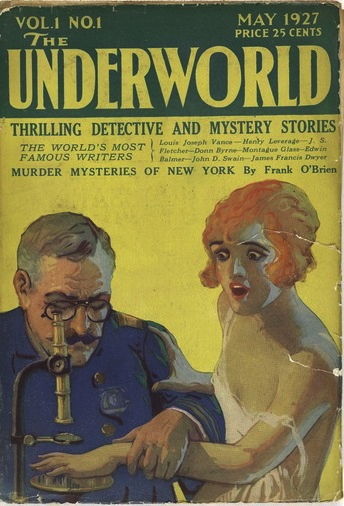
May 1927 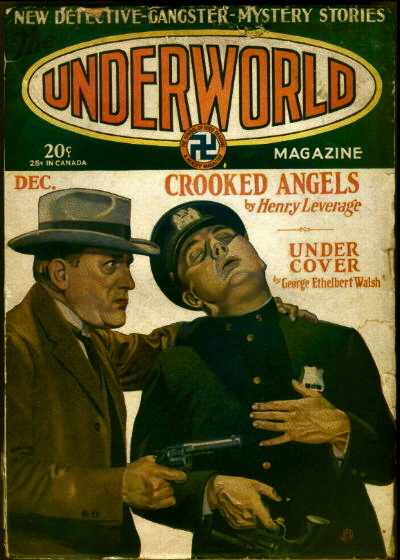
December 1928
Underworld was a success and new titles like Gangland Stories, Gangster Stories, Mobs, Prison Stories, Racketeer Stories and Speakeasy Stories sprung up overnight like dandelions. Most were successful for a while; by 1935 the craze had gone and so had almost all of these pulps. But while it lasted, a section of the public was outraged at the perceived assault on public morality and the glorification of criminals and their activities.
John S. Sumner, head of the New York Society for the Suppression of Vice, used its legislatively granted powers of search, seizure and arrest against Harold Hersey’s Gangster Stories. The first issue of Gangster Stories was published in December 1929; in February 1930 Sumner and his team threatened the Good Story Magazine Co., the publisher of Gangster and Racketeer Stories, with prosecution for inciting to crime and corrupting public morals. The circulation of both magazines was estimated to be about 80,000 copies.
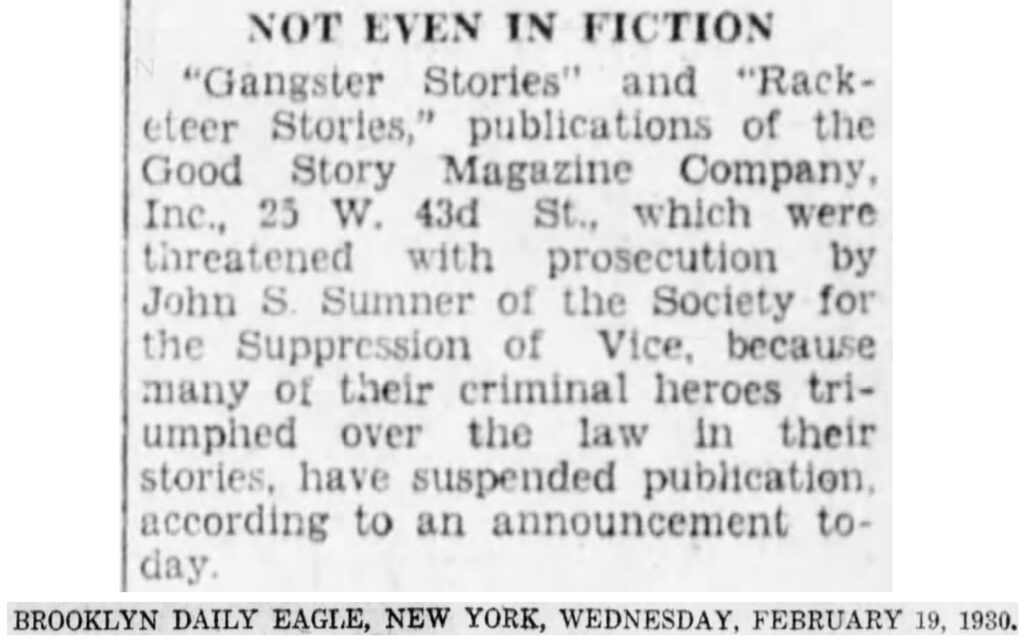
Were the magazines really like that or was this hyperbole? Read on and find out in this review of the second issue of Gangster Stories.
The magazine is 176 pages with 8 pages of ads at both beginning and end. There are no interior illustrations. The cover is rather strange, a skeleton in the background holding the hands of a clock with one hand and grasping a man in the other. In the middle ground a group of men are fighting while a woman looks in the opposite direction. The foreground is occupied by a woman in a cloche hat and a gun pointing at the reader. Artist unknown.
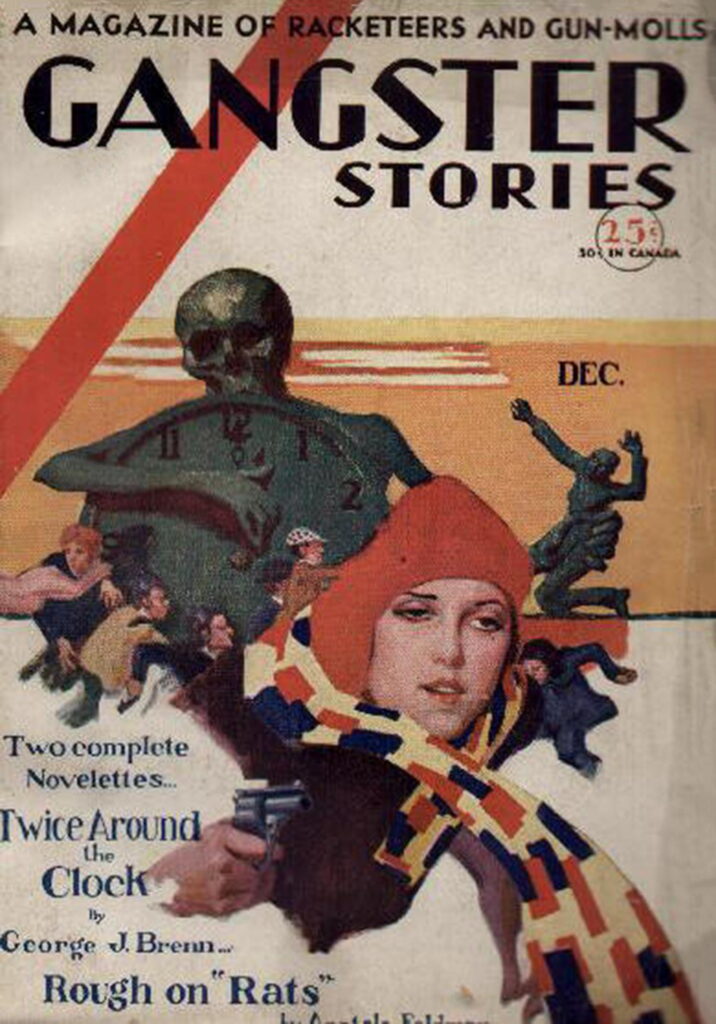
The opening story is Rough on “Rats” by Anatole “Tony” Feldman (1884-1973). Feldman was famous for creating Big Nose Serrano, a gangster pulp adaptation of Cyrano de Bergerac. He later co-edited the short lived Far East Adventure Stories and then went to work in the comics industry. This story is from early in his career when he was contributing heavily to Hersey’s pulps under his own name.

On reading it you can see why Sumner got so worked up. This is Hammett in reverse gear – breathless hard-boiled with no good guys. Just three ruthless, indestructible anti-heroes and an intelligent woman criminal battling traitors within and the FBI.
The story starts with three gang bosses in New York – one Irish, one Jewish and one Chinese – all plotting to hijack a government liquor shipment based on an anonymous tip. Each wonders whether the tip is a lure for a trap, and goes in armed. Meanwhile, the FBI is also tipped off about the gangsters hijacking plot. Ambitious for promotion, the lead FBI agent decides to let the three mobs shoot out with each other and then go in and clean up any survivors. The hijack is bungled and the shipment truck escapes while the three gangs shoot it out. After a few casualties, the FBI agent decides to move in. The Irish boss, seeing this, shouts for the gangs to stop fighting each other and turn on the FBI. Wonder of wonders, this happens and the FBI retreats with twenty plus casualties.
The gangs leave the scene, licking their wounds and pledging to find out the person or person behind this. Suspicion falls on the sister of the Jewish gang boss, Sadie, an intelligent, hard-headed criminal who just happens to be the Irish boss’s moll. Both gangs suspect her, so she goes to the Chinese gang to tell them that she suspects that all three gangs have traitors who are trying to depose the leaders and crown themselves. The Chinese boss and Sadie agree to work together to expose the traitors and she goes off to surveil a place where she suspects the traitors of meeting. She gets trapped and the traitors use her to lure the three bosses into their trap, planning to kill them when they take over the gangs.
The three bosses and Sadie set the place on fire by knocking down a lamp and wait for firemen to show up and rescue them. Once rescued, they steal a police car parked outside the burning building and head back to confront the traitors. The traitors are egging the gangs on against each other, planning to rule the shattered remnants. The three bosses drive into the middle of this fight, trap the traitors and take them back to a basement where they’re hung from the ceiling on ropes, cut with knives and slowly killed. A brutal scene. We’re not done yet. The real climax is the uniting of all three gangs to take over the city. A thrilling story and by the standards of the day, a subversive one.
After reading this hell on wheels thriller I was disappointed with the next few stories. Pearls of Death by Walt S. Dinghall is straightforward adventure romance with improbable characters. Guns of Gangland by Frederick Borden is imitation O’Henry with Damon Runyon dialog. A gangster chief sacrifices his life to unite his moll and her first romantic interest. Badly done. On the Spot by John Gerard is slightly better, though it has a weak plot. A gang boss, having shot his rival, hits a girl in his car and takes her home. She becomes his moll and helps him plan his crimes, only to betray him and reveal herself as the moll of the rival. If you’d been the gang boss, would you have been taken in? All three authors are likely pseudonyms, not real people.
Twice Around the Clock by George J. Brenn (1889-1973) is better. It’s a revenge story and I’m a sucker for them; l loved Jack Vance’s The Demon Princes series. Three people – two men and one woman – vow to avenge the death of a gang leader who was framed for murder by a rival gang boss, arrested on fake evidence by the police, prosecuted by a corrupt prosecutor and convicted by a judge whose ambition is to run for state governor with funding from the mob. How the three wreak this revenge is somewhat incredible, relying on improbable instant trust between people who have no reasons to trust each other. The story is interesting though and Brenn’s characters are not pure cardboard. Brenn, who worked at New Jersey Bell Telephone Co., was an author, theatre producer, banker and creator of the world’s first telephone detective who received clues over the phone and solved mysteries without leaving his office.
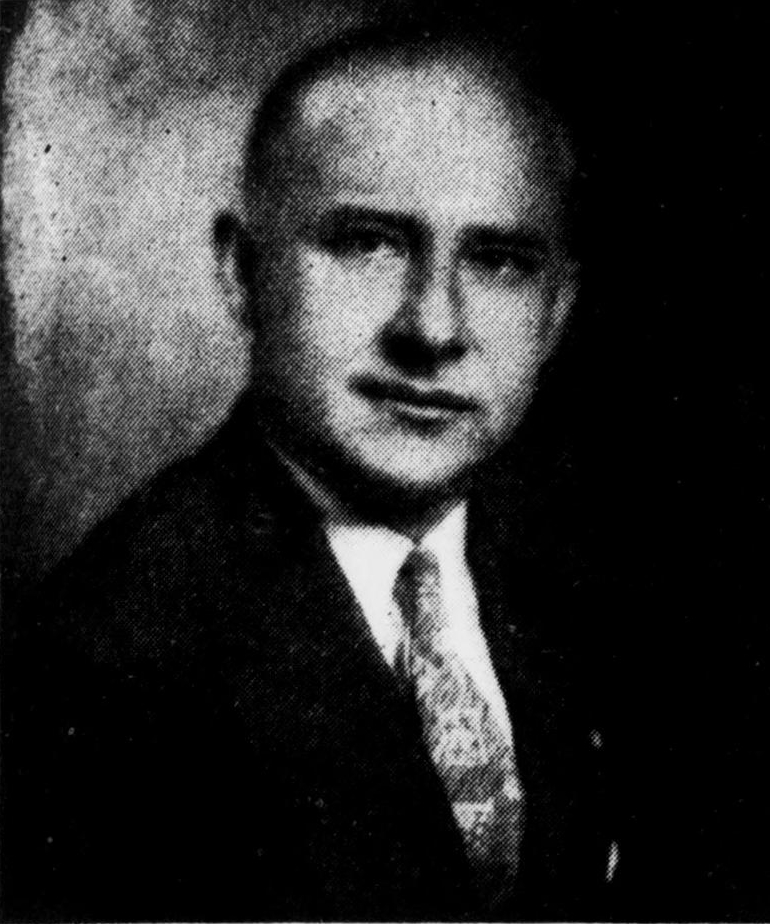
One Hour Before Dawn by William McNeil shares a plot with On the Spot. I wonder why they placed two nearly identical stories in the same issue. Stephen Barr Richardson’s Night Clubs of the Air is a laughably awful combination of the gangster and aviation genres. Both McNeil and Richardson are likely pseudonyms.
Henry Leverage was a criminal turned prolific pulpster. His Crooked Charity is the Christmas feature of this issue, starring an escaped prisoner as Santa Claus. All ends well…but for whom? It’s a short fun read. The Disastrous Duplicate by Jay G. Dunn is the double criss-cross story of a criminal snaring his crooked partner who sent him to jail. Full of improbable coinkidinks but fun if you don’t take it seriously. Dunn is another pseudonym.
E. Parke Levy (1910-1993), the writer of The Lady from Castle-Bar was a Philadelphian and graduate of Temple Bar University who wrote and produced musical comedies and pulp stories to pay his way through college. The story is interesting if not realistic. The heroine is Rosale Caldrone, the daughter of an Irish man and a Spanish woman, this device enabling the author to invest her character with the fiery temper and the black moods stereotypically associated with those ethnicities.
Despite these handicaps she is an interesting character, a woman who’s the real power behind a mob nominally led by Guy Harlan. When a new mob shows up in town, trying to take over Harlan’s turf, she naturally comes to his defence. The new mob is led by a man who she tries to lead into an ambush. Only, he treats her like a lady and Rosalie, turning a new leaf, heads out of the building into…No happy endings here. Parke worked briefly as a newspaperman from 1929-1931 before moving to California to be a script-writer for RKO. There he wrote radio sitcoms, achieving success with My Friend Irma, a comedy based on his friendship with his mother-in-law.

That brings us to the so-called letters section. It feels like an editorial stunt with all the letters claiming to love the magazine but Hersey says he had to publish them under false names because he hadn’t obtained permission to use the readers’ real names. Following this is a one page Hersey editorial building up the gang background of Tony Feldman. Truly an all-fiction magazine.
All in all, it was a surprisingly good issue, a refreshing change from the good guys always win plots popular in popular fiction of the time. Sumner and his cohort made sure that wouldn’t continue, allowing the magazines to continue publication only after Hersey pledged to not glorify crime or criminals. Neither Racketeer nor Gangster missed an issue. There’s a moral in all this if only I can figure out what it is.
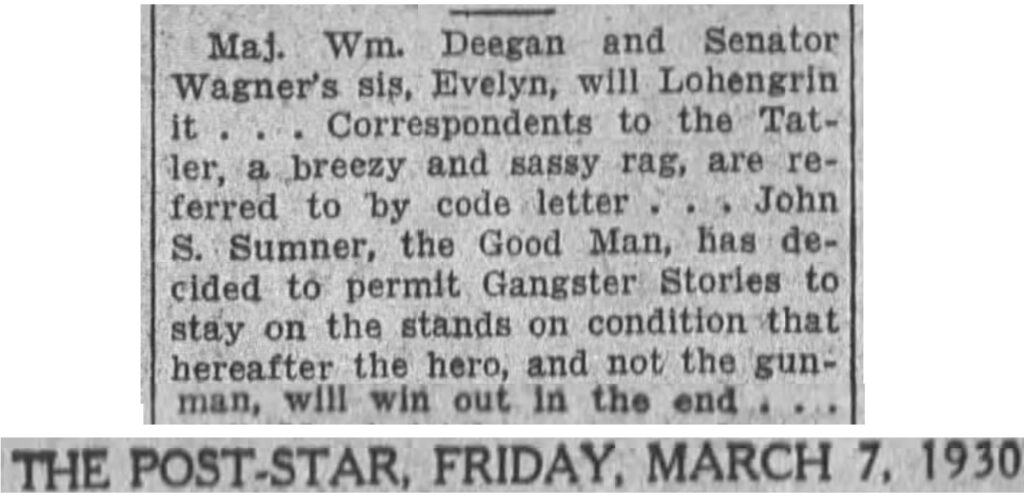
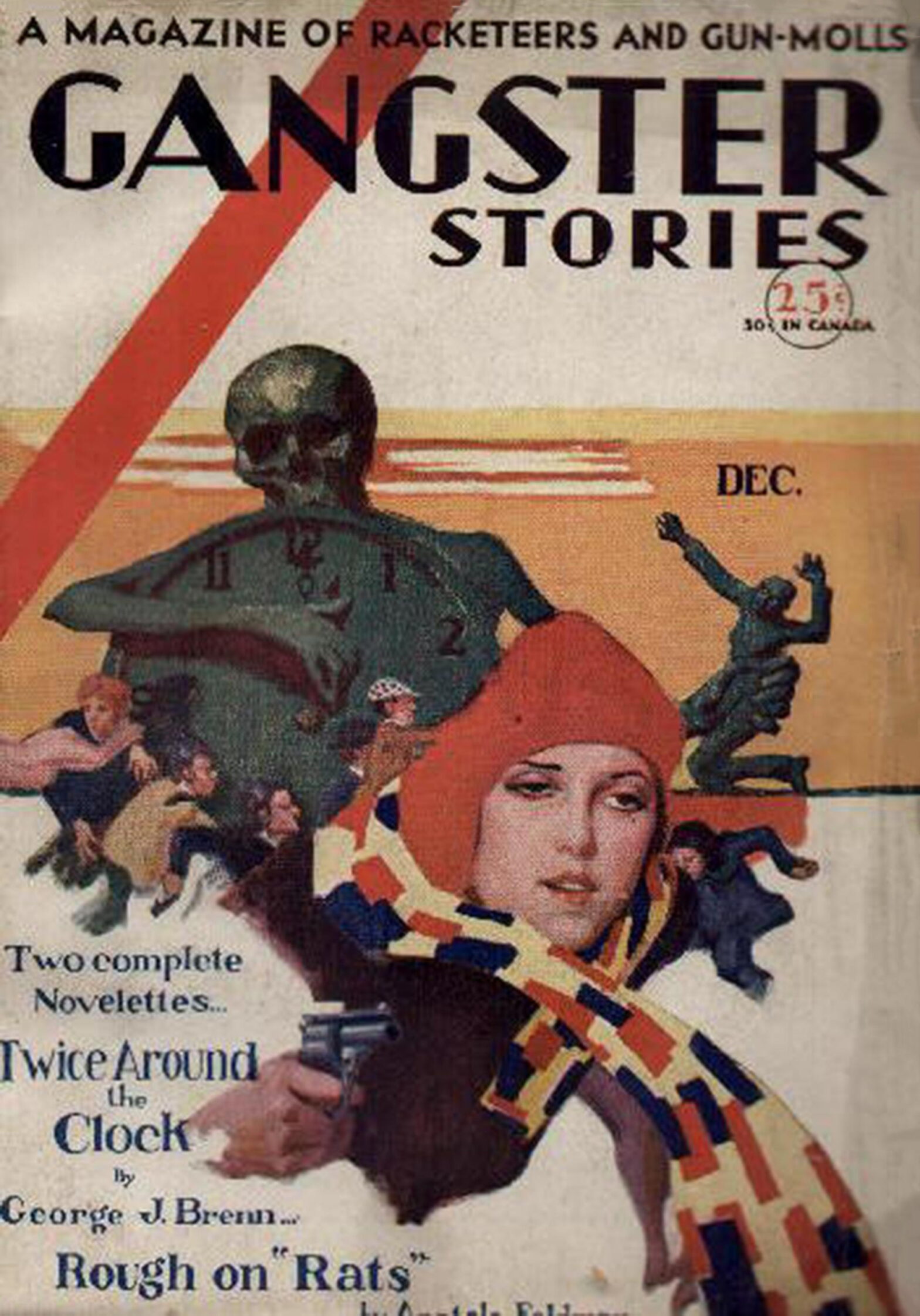
A long time ago I used to have a fairly large collection of the gangster pulps but the paper was so brittle and browned that I had to get rid of them before they fell apart on my watch.
Recently I’ve been reading some in my set of Blue Books and in the early thirties the magazine had a full page editorial stating they were against the trend of glorifying the gangster. They flatly stated that the criminals would not win in Blue Book, in other words the old good guys always win plot.
Not only Blue Book followed this rule but I’ve noticed The Popular Magazine also had such a rule in the teens and twenties especially. Both magazines are sometimes referred to as “Slicks in pulp clothing”. Mike Ashley titled his long essay on Blue Book in such a manner and so did Ed Hulse when he published his ground breaking two part essay on The Popular Magazine.
The main problem with such a policy of course is the stories all start to sound the same and the readers get bored when the hero always wins. Always getting the pretty girl is another boring plot element, both plots often used in the slick magazines.
Nice essay about the gangster pulp genre, Sai. Sometimes just reading one issue can sum up the entire genre.
Thanks, Walker. I enjoyed this issue much more than I expected to. Thank god most people won’t bother with coverless copies otherwise it’d have been out of reach.